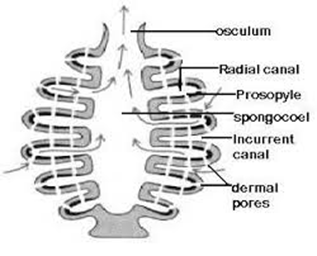Explain Spermatogenesis & Mature Sperm Structure | Biology Blog
Spermatogenesis
Spermatogenesis is the biological process through which sperm cells are formed from the germinal epithelium lining the seminiferous tubules of the testes. This epithelium consists of two main cell types:
-
Cuboidal primordial germ cells, which undergo division and differentiation to eventually become mature spermatozoa.
-
Tall somatic cells known as Sertoli cells (also called nurse cells), which support, nourish, and anchor the developing germ cells throughout the stages of spermatogenesis.
These Sertoli cells play a crucial role by creating a nurturing environment and regulating the development of sperm within the seminiferous tubules.
📘 Need Handwritten Notes or Custom Assignments on Spermatogenesis or Any Biology Topic?
Struggling to understand complex biology topics like spermatogenesis, plastids, or transcription? We provide affordable, well-organized notes and biology assignments perfect for school and college students.
📩 Mail Us for NotesPhases of spermatogenesis - It involves the following two phases -
A. Formation of spermatids - It includes the following phases -
1. Multiplication Phase:
During this phase, the sperm mother cells (also called spermatogonia) undergo mitotic division to produce new cells. Some of these cells migrate toward the lumen of the seminiferous tubules and enter the next stage—the growth phase—where they are referred to as primary spermatocytes.
Other spermatogonia remain in their original position and continue dividing to maintain the pool of cells. These undifferentiated cells are known as stem cells.2. Growth Phase:
In this phase, the primary spermatocytes grow in size. Their nuclei also enlarge, and they prepare for the upcoming maturation divisions.3. Maturation Phase:
Each primary spermatocyte undergoes the first meiotic division (a reductional division), forming two haploid daughter cells called secondary spermatocytes.
Each secondary spermatocyte then undergoes a second meiotic division (similar to mitosis), producing a total of four haploid cells known as spermatids.
Thus, each primary spermatocyte ultimately gives rise to four spermatids, which will further differentiate into mature sperm cells.
B.Spermiogenesis – Transformation of Spermatids into Spermatozoa
The process of transforming spermatids into spermatozoa is known as spermiogenesis. The mature spermatozoa are commonly referred to as sperm.
Spermatids, which are produced after the maturation (meiotic) division, are haploid cells that resemble typical animal cells. However, in this form, they are non-functional as male gametes. Through the process of spermiogenesis (metamorphosis), these non-motile spermatids undergo a series of structural and physiological changes to become motile and functional sperm.
Key Changes During Spermiogenesis:
-
Elongation of the Cell:
The spermatid elongates lengthwise, increasing in size and acquiring the slender shape of a sperm. -
Nuclear Condensation and Shaping:
The nucleus loses water from its nucleoplasm (nuclear sap), causing it to shrink and condense. It also takes on various shapes depending on the species.
👉 The final shape of the nucleus determines the shape of the sperm head. -
Retention of the Cell Membrane:
The original cell membrane of the spermatid remains intact and becomes the outer covering of the entire mature sperm, including the tail. -
Centriole Rearrangement and Tail Formation:
The two centrioles in the spermatid rearrange themselves behind the nucleus:-
The anterior centriole becomes the proximal centriole.
-
The posterior centriole becomes the distal centriole, which transforms into the basal body.
-
The basal body gives rise to the axial filament (or flagellum), which forms the core structure of the sperm tail, enabling motility.
-
Structure of motile sperm -
The mature sperm consists of four parts -- Head part
- Neck
- Middle
- Tail Part
- The Head part consists of a dense nucleus in which cell organelles are present. On the tip of the nucleus, a small cap-like structure is presently known as Acrosome which is formed from the Golgi complex. It helps in penetration of Egg membrane during fertilization by dissolving enzymes called hyaluronidase.
- The Neck part is a short segment of sperm that contains two centrioles, proximal and distal centriole. These are introduced at the time of fertilization along with the sperm nucleus to initiate cleavage in the zygote.
- The middle part, Which is also known as the body of the sperm that contains mitochondria is present which function as to provide energy for the movement of sperm during copulation.
- The last one is the Tail part which is the longest segment of sperm, consisting of central axial filament, the thin layer of cytoplasm, and an outer smooth plasma membrane. They have flagellar movement during copulation.
Difference between spermatogenesis and oogenesis -





Comments
Post a Comment